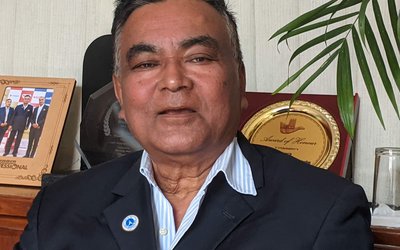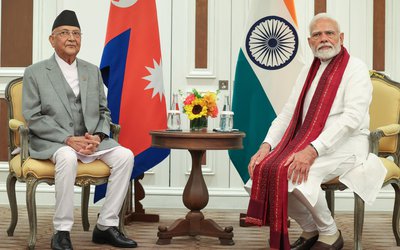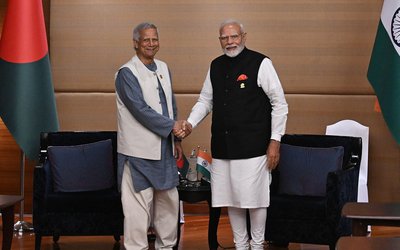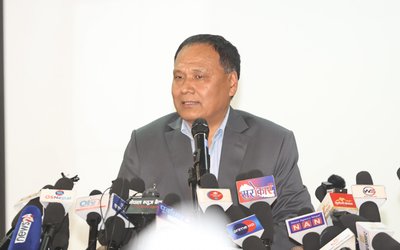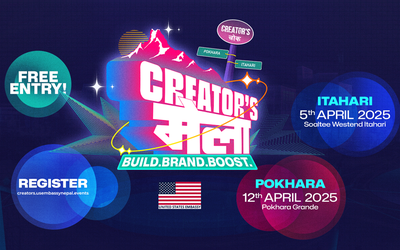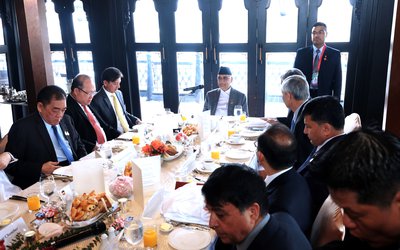
What is the state of agreement?
After the decision to award consultant contract to Lahymaer, Tanahu Hydropower Company Board endorsed it and it was invited for negotiations and agreement. Following several rounds of meeting, we signed contract agreement on the amount of 27 million dollars just a few years back. Now the project will move ahead. According to the schedule of the project, we have signed a 12-year consulting agreement. The consulting agreement will begin fifteen days after signing the agreement.
When did the selection of consultant begin?
The first prequalification notice for consultants was announced in 2013 for project preparation jointly by Nepal government, Nepal Electricity Authority and Asian Development Bank through Asian Development for advance selections. ADB has demanded financial and technical proposal from six qualified consultants. Out of them, Lahyamer was selected in May 2014. However, there appeared many disputes on the issue and it was prolonged for almost a year. Ultimately, the government of Nepal and Ministry of Energy decided to go with the consultant selected by Asian Development Bank.
What does a consultant do?
As per the agreement, the consultant will work to develop all necessary infrastructure required for the project including roads and camps. On the part of the company, we will support them. The necessary work will be conducted with the partnership between company and consultant. It will prepare the complete inception schedule and review the tender documents.
How did project identify?
The feasibility study of Tanahu Hydro Power Project was conducted by Nepal Electricity Authority (NEA). The capacity of the project was identified as 127 MW. This is a semi-reservoir type project. The electricity will be generated by damming the upper Setiriver near Damauli, 150 kilometers west of capital. JICA made a detailed feasible study through J Power. The upgraded physical study made by J Power of Japan recommended to augment capacity up to 140 MW by slightly modifying dam and turbine. If we can generate 140 MW from the capacity of 127 by improving technology, there is nothing wrong. NEA then decided to move on.
How will it be finalized?
The Lahymamer will hold interactions with J Power, which has designed the project, in September and will discuss all different aspects and take ownership from them. The first year will go for logistic development including road, the second will include the tendering process.
When will the construction begin?
Hopefully, the construction is likely to begin from the middle of 2016. The construction period of the project is six years. As we have already spared one year, we want to complete the project in five years. After the completion of the project, it will operate under the supervision for another five years under the consultant. The sediment flushing is a critical issue of the project and operation methodology of this project is different from that of others. There is the need to increase the technical competency of Nepalese technicians. This concept was agreed earlier. The technicians will be trained under the consultant. After the consultantsare demobilized, Nepalese technicians will take lead.
How will power evacuate?
There will be two units of 35 MW turbines -- double circuit transmission line to Bharatpur and NEA is building substation in Bharatpur. From Bharatpur, the energy will be transmitted to different parts of country. If everything goes well, the project will be completed by 2021.
Given the present instability, how hopefulare you?
We use several safeguards to complete the project in time and make it environmentally sound. The present cost of the project was three years old. After revaluation, we will send it for revision. The cost of the project estimated three years ago was 505 million dollars. The price was of 2013 at the time of inception. Since the market prices have changed, there is the need to adjust the prices. There is a provisional budget of 17.5 million. This is allocated for five years. The consultant will receive the remaining money only after the revenue generation of the project.
What conditions are there?
We have added many conditions in recent negotiations as safeguards. The conditions are such that it will motivate the consultant to pursue the contractor. As per the recent provision of Public Procurement Act, even contractors cannot bid with lowest amount. I think even contractor will not come loosely. Even consultant has a certain reputation and they will be unlikely to accept the cheap contractor.
What is the nature of the project?
This is a six hour peaking capacity project. It will provide 140 MW power in six hours. After that the power will reduce. Unlike Kulekhani the water will overflow. This is a small storage. The total cost of the project looks higher. However, we are spending a huge amount of money in environment mitigation. The project is fulfilling the environment guidelines of Asian Development Bank and The World Bank. There also includes social and community safeguards and resettlement safeguards also.
What other important aspects are involved?
This is the first project with all social and environmental safeguards. Earlier, we thought there were more safeguards in Middle Marsyangdi, where we spent 4 percent of the contract cost. However, we are spending more than 10 percent here. There will be a lot of activities. Three kilometers area submerges, with300 million cubic meters of water.
What other components are there
There is a major component on local development. We are going to have electrification in 17 village development committees, schools buildings and construction of seven suspension bridges. The project will spend 50 million dollars for all these. It is quite substantial. Major contributors are ADB (150 million dollars),JICA (118 million dollars), European Development Bank (60 million dollars) and Nepal government (70 million dollars). The discussion is going on about the constraints of 15 million dollars.
What is the role of the company?
Our part will be just as a facilitator. This project has different modalities as the consultant will work as managers. We have to build four kilometer roads for powerhouse and we need to construct another 700 meters to reach headwork. The process of opening the track is already in the process. Here the consultant will work as the project manager. The project is formally launched now. This is a very typical project.
- IME GROUP: Expands Into Paper Industry
- Mar 24, 2025
- CPN UML: Instigated By India
- Mar 23, 2025
- ADB’S CHIEF ECONOMIST: Nepal Reduces Poverty
- Mar 11, 2025
- FM DR. DEUBA: A Successful Visit
- Mar 11, 2025
- MD GHISING: Target Of Personal Grudge
- Mar 09, 2025





